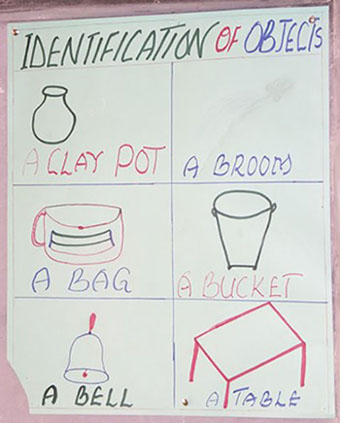4.4 Use of technical vocabulary
When you address children, it is important to use words and structures that are easily accessible to them, regardless of their ability level. However, in all disciplines, you will need to use technical words: a fault line in geography, osmosis in science, a bisecting line in mathematics to name a few. All these technical terms will be new words for pupils, words that they will need to understand, learn and memorise.
Activity 19: Strategies to help children understand and memorise technical terms
This activity will enable teachers to consider techniques that help children understand and memorise technical terms.
- Brainstorm and list all the strategies you can think of that will help pupils understand and memorise technical terms. (See TESSA key resource ‘Using mind maps and brainstorming to explore ideas [Tip: hold Ctrl and click a link to open it in a new tab. (Hide tip)] ’ on the TESSA website.)
- Then read the Case study 2, Activity 2 and Resource 2 of Section 1 of Module 2 of Numeracy (Primary) on the TESSA website. If necessary, add ideas to your list.
If possible share and compare your ideas with a colleague.
In addition to using a dictionary, what is on your list?
- Posters on the walls of the classroom with the new words to be learned and practised, and illustrations explaining them
- Signs placed on walls with new words and definitions
- Activities for learners to practise using these new words, such as games and puzzles.

4.3 Actions speak louder than words



